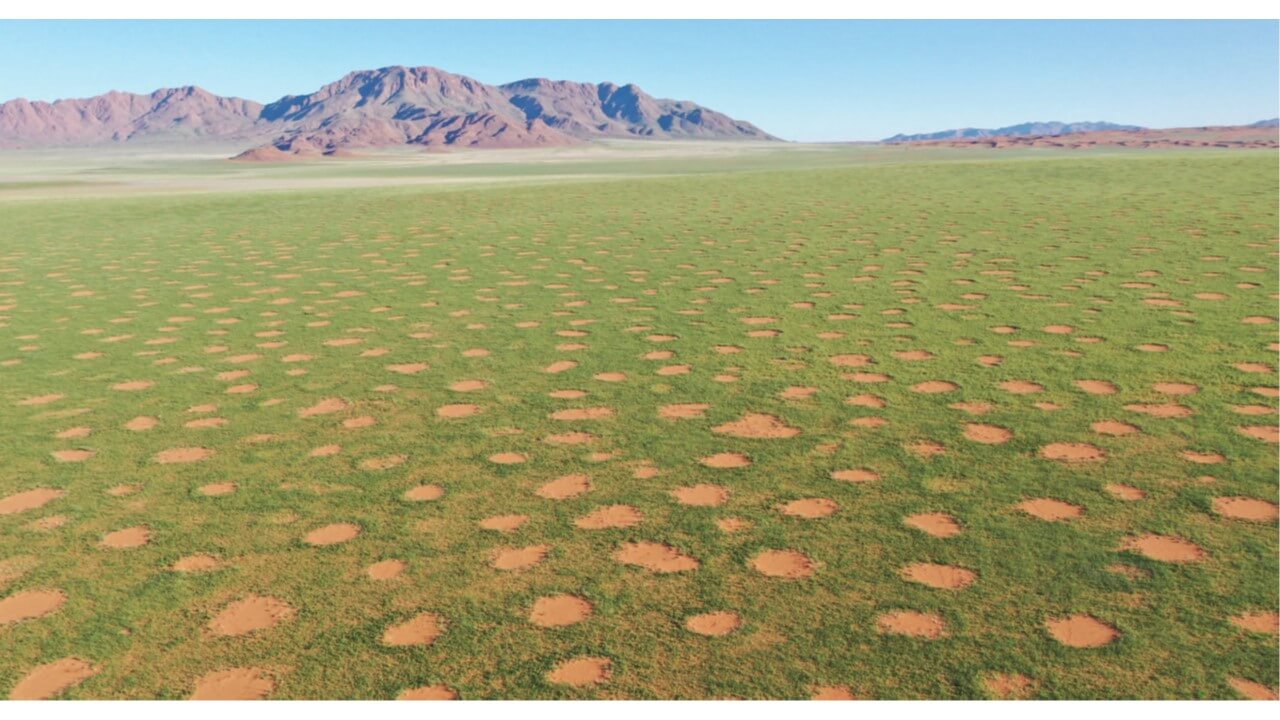Researchers from Ben Gurion University offer an innovative explanation for this unique behavior of the fairy circles phenomenon: a combination of phenotypic adaptation at the level of the individual plant, by deepening the roots of the plants into more moist soil layers, and of self-organization in space at the population level

Climate change and the development of dry climate conditions threaten ecosystems and the services they provide to humans. Research led by Prof. Ehud Miron from Ben-Gurion University of the Negev analyzes the mysterious plant patterns known as "fairy circles" and reveals the key to the resilience of ecosystems in drought conditions. The results of the study were published in the journal Proceedings of the National Academy of Sciences (PNAS).
Plants are characterized by a high ability to adapt to changing environments by changing their properties. This phenomenon known as 'phenotypic adaptation' allows a single plant to cope with environmental stress such as a severe lack of water. A large population of plants has another mechanism to deal with water stress - self-organization in space by partial mortality of the population. 'Fairy circles' are a fascinating example of this type of organization where plant mortality is limited to an orderly array of bare ground circles. These circles serve as an additional source of water for the neighboring plants and thus improve the system's durability in the water trough.
The Torah of plant patterns so far predicts the appearance of circles of bare soil in vegetated surfaces with the development of dry conditions (hole pattern), thus explaining the formation of fairy circles. According to this theory, the aggravation of the dry conditions leads to the merging of the circles of the bare ground into a pattern of vegetation stripes and stripes of bare ground alternately (stripe pattern), and subsequently to the breaking of the vegetation stripes and the creation of a pattern of vegetation circles on bare ground (a dot pattern). Patterns of stripes and dots have indeed been observed in different parts of the world, but not in fairy circles. When the amount of precipitation is small, the hole pattern of fairy circles is preserved but another pattern appears next to it; The vegetation cover between the circles has ceased to be full and in its place appears a dot pattern of vegetation circles that are very small in size compared to the fairy circles. The result is a "multiscale" pattern characterized by two different length scales.

Prof. Ehud Miron from Ben-Gurion University of the Negev, together with his fellow post-doctoral students, Jamie Bennett, Bidesh Bara and Michel Pera, and his colleagues, Prof. Hezi Yitzhak and Dr. Stefan Getzin We offer an innovative explanation for this unique behavior of the fairy circles phenomenon: a combination of phenotypic adaptation at the level of the individual plant, by deepening the roots of the plants into more moist soil layers, and of self-organization in space at the population level. With the help of a mathematical model that for the first time combines these two types of response, Prof. Miron and his colleagues solve the puzzle of the absence of streaks and dots along the rainfall and the appearance of a multi-scale pattern. The study of fairy circles illustrates the need to expand the existing theory of plant patterns by taking into account possible changes in plant properties.
Furthermore, with the help of the model, the researchers found that the combination of phenotypic adaptation and the creation of spatial patterns significantly improves the system's resistance to extreme drought conditions, compared to the resistance provided by each response type separately. The fairy circles in Namibia express one scenario of combining these types of response, but the model reveals the programming of additional response pathways leading to other multi-scale patterns which are also characterized by high resistance. These findings suggest that ecosystems have a variety of alternative response pathways characterized by different resistance to environmental pressures.
"Understanding the complex response of ecosystems to a dry climate may provide clues on how to improve their resilience by identifying the response pathways that are characterized by high resistance and diverting ecosystems at risk to these resilience pathways," explained Prof. Miron, who recently won an ERC Synergy grant for the study of resilience pathways in arid regions , savannahs and tundras.
This research (grants no. 1053/17 and 2167/21) was supported by the National Science Foundation.
More of the topic in Hayadan:
